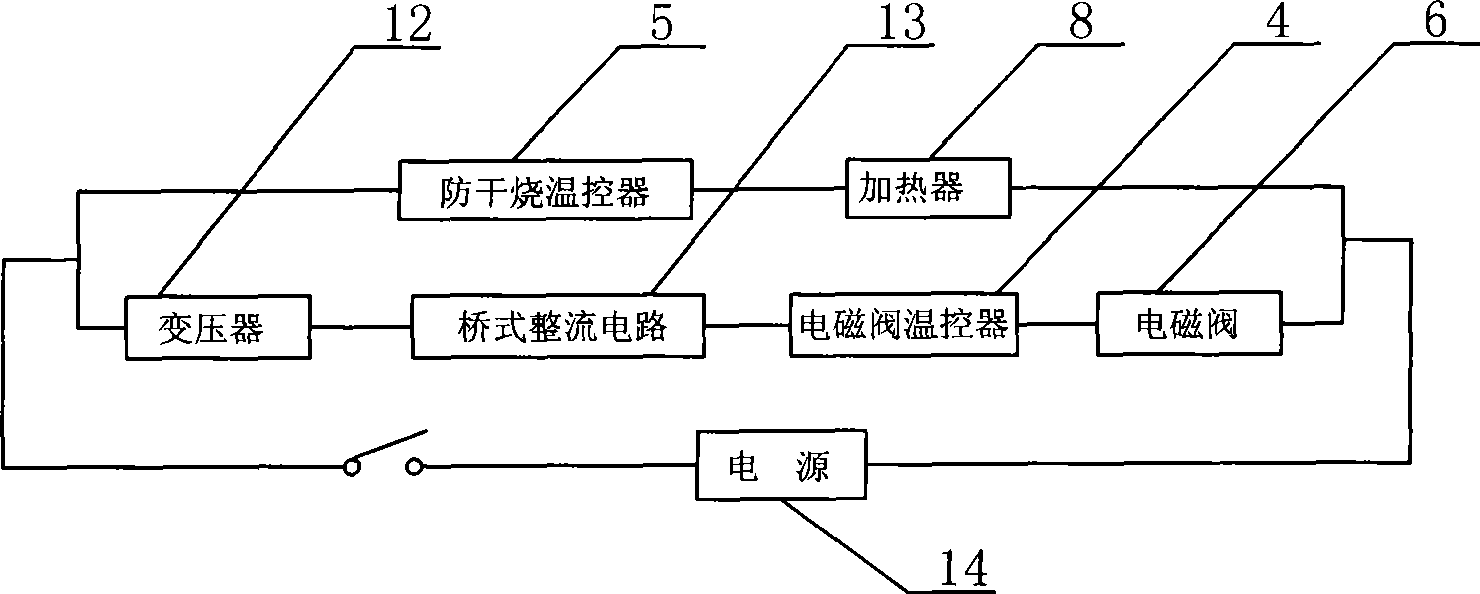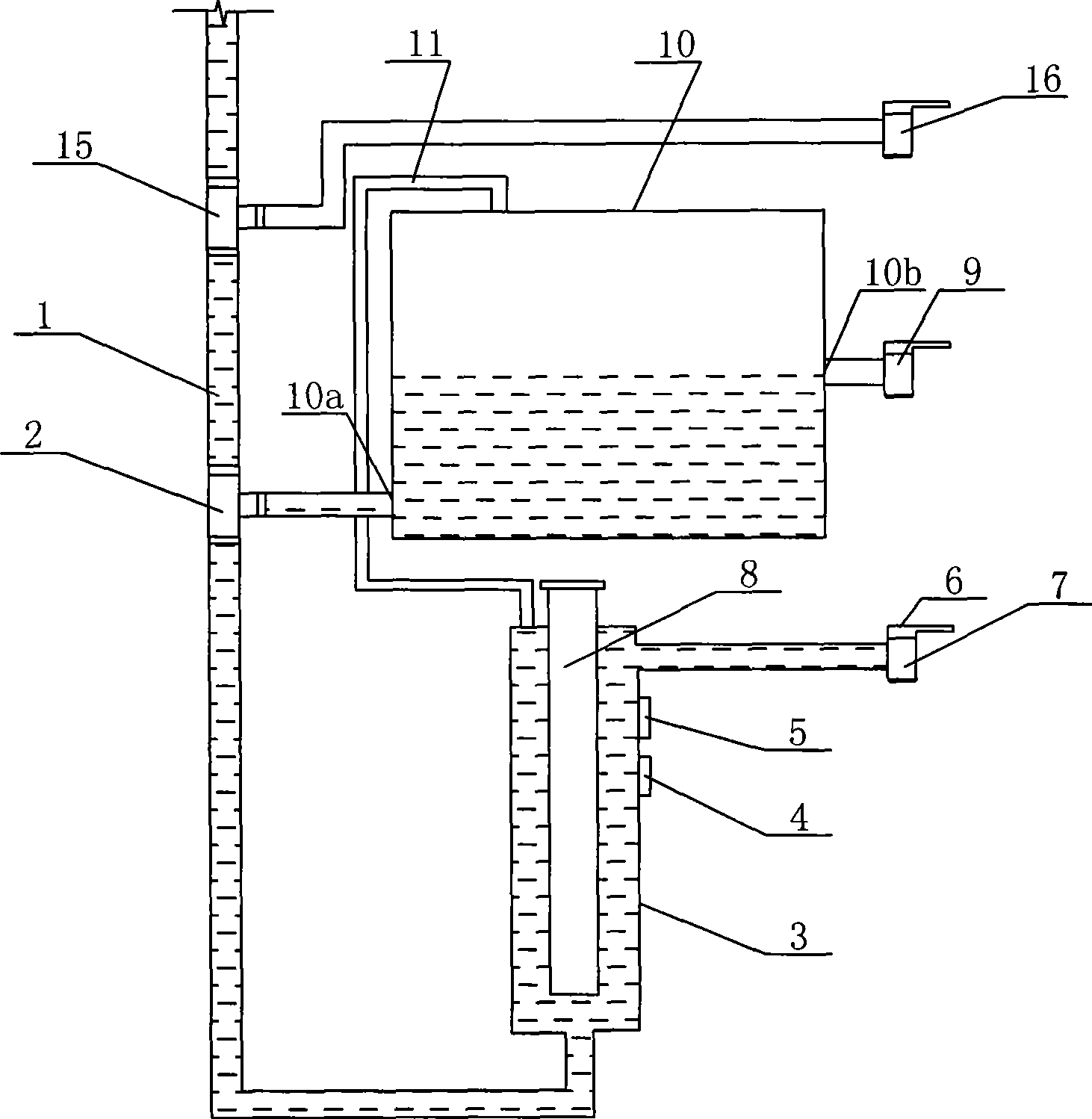Instant-heating type drinking machine hydrothermal system
A water dispenser and instant heating technology, applied in water heaters, fluid heaters, beverage preparation devices, etc., can solve problems affecting human health, power waste, aging, etc.
- Summary
- Abstract
- Description
- Claims
- Application Information
AI Technical Summary
Problems solved by technology
Method used
Image
Examples
Embodiment Construction
[0019] The present invention will be further described below in conjunction with the accompanying drawings of the description.
[0020] As shown in the figure, the water heating system of the instant water dispenser includes a water inlet pipe 1 connected to an outlet of bottled water or bagged water. One way of the water inlet pipe 1 is connected to the water tank water inlet 10a at the bottom of the cold water tank 10 through the tee pipe 2, and the other way is connected to the bottom pipe of the heating water pipe 3. The heating water pipe 3 is vertically arranged, and the heater 8 is vertically arranged in the heating water pipe 3. The upper part of the heating water pipe 3 is connected with the hot water faucet 7. The top of the heating water pipe 3 is connected with an exhaust pipe 11. The exhaust pipe 11 is connected to extend into the cold water tank 10. The outlet of the exhaust pipe 11 is located in the upper cavity of the cold water tank 10. The cold water tank 10 ...
PUM
 Login to View More
Login to View More Abstract
Description
Claims
Application Information
 Login to View More
Login to View More - Generate Ideas
- Intellectual Property
- Life Sciences
- Materials
- Tech Scout
- Unparalleled Data Quality
- Higher Quality Content
- 60% Fewer Hallucinations
Browse by: Latest US Patents, China's latest patents, Technical Efficacy Thesaurus, Application Domain, Technology Topic, Popular Technical Reports.
© 2025 PatSnap. All rights reserved.Legal|Privacy policy|Modern Slavery Act Transparency Statement|Sitemap|About US| Contact US: help@patsnap.com



